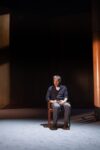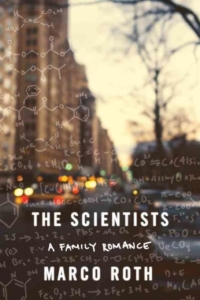 I realized recently that I’d somehow spent the past year reading grief memoirs. It was a varied collection whose highlights included Cheryl Strayed’s Wild, Ann Patchett’s Truth & Beauty, Emma Forrest’s Your Voice in My Head, and Joan Didion’s Blue Nights. I wasn’t sure what had propelled the reading streak, but when I sat down and read Marco Roth’s The Scientists: A Family Romance, I discovered my year of grief memoirs had saddled me with certain expectations.
I realized recently that I’d somehow spent the past year reading grief memoirs. It was a varied collection whose highlights included Cheryl Strayed’s Wild, Ann Patchett’s Truth & Beauty, Emma Forrest’s Your Voice in My Head, and Joan Didion’s Blue Nights. I wasn’t sure what had propelled the reading streak, but when I sat down and read Marco Roth’s The Scientists: A Family Romance, I discovered my year of grief memoirs had saddled me with certain expectations.
I have to admit that I’m always sucker for a “true story.” There’s something so alluring about inhabiting another person’s real life; about bearing witness to another person’s suffering in place of your own. There’s a therapeutic element to grief memoirs, but also a voyeuristic one — the same urge to pick up a copy of US Weekly is the lowbrow version of the one that leads to you to avidly devour stories of acclaimed authors’ pain. We consume other people’s lives.
The unspoken imperative behind most memoir writing is to lift specific, individual experience into the universal plane: an addict’s journey to recovery helps me understand my friend’s alcoholism; a daughter’s mourning for her mother articulates a certain aspect of my own experience with my grandfather’s death. Grief memoirs, in particular, often fall in line with this kind of Oprah-esque catharsis via voyeuristic identification with another’s story: we replace the author’s sad tale with our own, and, in their recovery, discover hope for ourselves. An author’s description of a path through and away from trauma becomes a generalized map to redemption.
This sentimentality is something I both love and detest about memoir — I like to say I don’t believe in the concept of “guilty pleasures,” but I have to admit that I occasionally feel embarrassed by my soft spot for a dramatic and devastating true story. When I read The Scientists, though, I found myself confronted by something wholly different than the stories I loved, which forced me consider my assumptions about the genre.
When considering even the small pool of memoirs I read over the course of the past 12 months, I realized that in order to achieve the kind of reader-author emotional symbiosis that most grief memoirs are based on, authors rely on a kind of objective certainty about past events and emotions. It lies implicit behind every memoirist’s recollections. It’s this certainty in the potential for memory to be regurgitated as narrative — and the author’s authority over that narrative — that The Scientists so glaringly lacks. The difference shines through in the moment described in all grief memoirs: the moment in which the author reacts to the news that the loved one has died. In three of the memoirs I read last year, this moment is dramatic:
At three o’clock in the morning, I drove to Karl’s house and when I woke him up and told him what I knew I started to cry, because I had just begun the second half of my life, the half that would be lived without Lucy. [1]
After Dr. R died, I called that ansaphone that would not take messages, and called it again, over and over, like opening and closing the fridge door in search of food that isn’t there. If I called enough times he might be. I called until one day, it was disconnected and there was nothing on the line but my own breath. [2]
I howled and howled and howled, rooting my face into her body like an animal. She’d been dead an hour. Her limbs had cooled, but her belly was still an island of warm. I pressed my face into the warmth and howled some more. [3]
And then there’s that moment in The Scientists:
Without really thinking about it, I began to read the Times. . . . The words flooded over me in a black-and-white hum. When I put down the paper, my sweating hands and palms were grimed with print. There would be another edition and another, day after day, world without end, in which, every day, smaller worlds were extinguished, never to appear again. I had pictured this moment of his death so many times that when it actually came it felt dreamlike, something I’d remembered before it actually happened, a photograph that had leaped from a page of those once-forbidden German volumes.
In Forrest, Strayed, and Patchett we have straightforward memoir. You can see the difference in the activity level of the verbs: Patchett cries when she realizes her friend has died; Forrest calls her therapist’s answering machine to hear his voice; Strayed howls, and presses her face onto her mother’s body. And Roth immediately picks up the paper and reads. He distantly considers his father’s death within the larger context of other deaths and global events; he relates the experience to the recollection of a picture in a book. Even in this most pivotal moment — the crucial scene in which his father dies — he describes an intellectual response. In the same paragraph, he later describes himself as “a thinking stone:” his emotions shut down, and yet his intellectual capacity remains.
In “Overture,” the first chapter of The Scientists, Roth explains, “My decision to go back through it all, as much as I can remember, was made to remind myself that I can consciously choose to make memoir out of memory.” Roth draws our attention to what memoir is — a constructed, self-conscious narrative plucked out of the hazy, episodic world of memory — and immediately sets his book as one apart from contemporary memoir culture.
* * *
The Scientists: A Family Romance describes Roth’s father’s death from AIDS when he was 19, and Roth’s pursuit of answers to the questions that arose about his life in the wake of his death. The Scientists is Roth’s critical effort to understand his father, and, by extension, the general atmosphere of guilt, restraint, and “thwartedness” that he felt throughout his childhood. It is less a straightforward retelling of Roth’s and his family’s story than it is a critic’s interrogation of the memoir as a form, and the possibilities and limitations it presents.
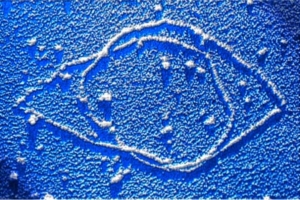 It’s obvious to anyone familiar with his work at n+1 that Roth is a born (or perhaps nurtured) literary critic. As he describes in The Scientists, his parents made every effort to give him a “nineteenth-century, ‘middle-class’ European education”: his mother, a classical pianist, performs regular house concerts; his father has him reading Shakespeare’s history plays when Roth is “about eight or nine”; once he learns to read English, his father starts teaching him La Fontaine in the original French. Roth is educated in tony private schools in Manhattan’s Upper West Side, where his family lives, and after a brief stint at a private liberal arts college, Oberlin (which he attends out of rebellion — his father calls it “that hippie cow college” and eventually threatens to disinherit Roth if he doesn’t transfer out), he studies comparative literature at Columbia, where he falls in love with postmodern literary theory. After graduating, he moves to Paris to study with Derrida and goes on to pursue a PhD in comparative literature at Yale; in 2004, he helps to found n+1. As Roth describes his life’s trajectory, it becomes clear that in order to describe a life spent questioning, critiquing, examining and arguing with culture and literature, Roth has to focus that same critical lens on his own version of the story.
It’s obvious to anyone familiar with his work at n+1 that Roth is a born (or perhaps nurtured) literary critic. As he describes in The Scientists, his parents made every effort to give him a “nineteenth-century, ‘middle-class’ European education”: his mother, a classical pianist, performs regular house concerts; his father has him reading Shakespeare’s history plays when Roth is “about eight or nine”; once he learns to read English, his father starts teaching him La Fontaine in the original French. Roth is educated in tony private schools in Manhattan’s Upper West Side, where his family lives, and after a brief stint at a private liberal arts college, Oberlin (which he attends out of rebellion — his father calls it “that hippie cow college” and eventually threatens to disinherit Roth if he doesn’t transfer out), he studies comparative literature at Columbia, where he falls in love with postmodern literary theory. After graduating, he moves to Paris to study with Derrida and goes on to pursue a PhD in comparative literature at Yale; in 2004, he helps to found n+1. As Roth describes his life’s trajectory, it becomes clear that in order to describe a life spent questioning, critiquing, examining and arguing with culture and literature, Roth has to focus that same critical lens on his own version of the story.
The Scientists isn’t the only memoir written about Roth’s family (at one point in the book, he refers to memoir-writing as “our family way”). While Roth was studying at Yale, his aunt, Anne Roiphe, published 1185 Park Avenue, her memoir about their family. While Roth’s father claimed to have contracted AIDS do to an accidental needle prick during the course of his work as a researcher at Mount Sinai, Roiphe insinuates in 1185 Park Avenue that his father’s disease may have been “contracted in the more usual way” — implying that he had gay lovers. Faced with the possibility that his father may have led an entirely different life than the one he had known, Roth feels an urgent need to know the truth.
Roth initially grills his aunt, his mother, and his father’s good friend about his father’s sexuality. When those efforts prove fruitless, he turns to what he knows best — literature — for answers. In a pivotal section of the book, Roth re-reads and investigates the books his father gave him over the course of his life in order to uncover any truths hidden therein.
Roth begins his blending of literary analysis and memoir while in graduate school at Yale. First, he re-reads Thomas Mann’s Tonio Kröger, a Bildungsroman in which the titular character is an artist, a writer, who, according to Roth, “regards himself as a diseased person, his artistic talents a curse, like inherited syphilis.” His father gave him the book to read when Roth was 11, at which time Roth whole-heartedly identified with Kröger’s passionate declaration of himself as an artist. Re-reading it as an adult, though, Roth wonders whether he “hadn’t missed the point of his reading entirely,” and if his father might have identified with Kröger’s perception of himself not as an artist, but as “diseased.” After discovering Mann’s bisexuality, Roth pivots to a consideration of Mann’s “most unapologetically ‘out’” story, Death in Venice, and wonders whether his father had “recognized . . . an opening in which to plant the seed for a future confession he’d never have the time or courage to make.”
Of course, Roth the critic can’t allow such a too-perfect conclusion to stand without examining it further, and qualifying it: “Thomas Mann may have slept with young men, but this didn’t mean that my father knew he slept with young men — though it would have been a strange ignorance.” Again, he turns to alternate interpretations: perhaps his father didn’t feel an affinity for any queer subtext in Tonio Kröger but rather was drawn to the “fulfillingly unfulfilled life it described” — perhaps he wanted Roth to “find strength in ambivalence and frustration.” Like Roth, we come to no further conclusions about his father. But on full display is Roth’s impressive ability as a critic, and the subtle, careful diligence with which he reads and considers a book; a question; a relationship.
It’s in these moments of critical response mixed with personal memoir that Roth is most compelling. After he’s run through all possible theories for his father’s interpretation of Tonio Kröger, Roth arrives at the closest thing to a conclusion that he can muster:
Tonio most resembles a voyeur, not a masochist; he has apparently succeeded in putting himself beyond the touch of physical desire. He didn’t live in a closet but in a room with windows, one of which might, one day, become a door, although it was impossible to know which one, or whether he’d stumble, as if by accident, through the window to stand shivering, shard-dusted, bloodied, on the other side.
Roth’s father’s memory is like Tonio: set apart; contained; waiting to see if he might someday be seen for what he’s always been. We get the sense that Roth is also unsure if his memory of his father is able to withstand such extensive interrogation — or if his father’s image might end up “shivering, shard-dusted, bloodied” by the end.
After Tonio Kröger, Roth tackles Ivan Goncharov’s Oblomov — a strange, didactic nineteenth-century Russian novel about a terminally lazy aristocrat, and then turns to The Way of All Flesh by Samuel Butler (who, Roth makes sure to note, was “a multi-faceted fuckup of a man”). About all of his reading thus far, Roth writes, “Everything there spoke to me of an unavoidable doom of thwarted desire, tarnished hope, a practice of disappointment to which I felt already too thoroughly habituated.”
But even as he finds reiterations of the guilt, shame, and repression that he experienced in childhood, Roth’s search for his father through literature proves extraordinarily intimate. As the memoir’s subtitle “A Family Romance” (with all its Freudian connotations) signifies, in looking for details about his father’s life, Roth finds himself entwined with his father’s memory as intricately as if it was a lover. Roth notes that The Way of All Flesh was published “about the same time that a Viennese doctor was publishing his first case studies of hysteria,” and when he begins a new love affair, he realizes “my growing closeness to my father threatened to make any present love impossible.” A true romantic, Roth is unable to stop himself from pursuing his obsession.
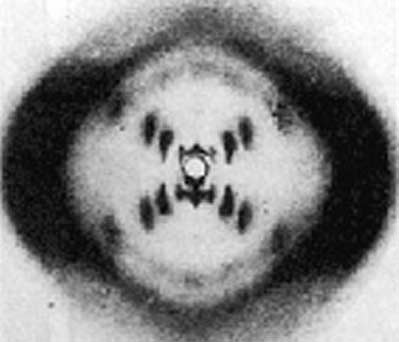 Despite the emotional imperative behind his literary investigations, these chapters stand out for their gymnastic dual description of Roth’s search for meaning via literature and his simultaneous skepticism toward that search. He’s annoyed by his urges to find truth in text even as he satisfies them; he dismisses his efforts to find his father’s identity within literary characters even as he continues them: “Nearly everyone has this adolescent tendency to identify with literary characters, even when we should know better,” he writes. He repeats the reprimand against such identification multiple times, always after passages in which he’s just done what he’s about to warn us against: “People are not characters in some sort of one-to-one correspondence,” he maintains. In the memoir’s final chapter, he hits the same note: “that’s what people do: we can’t not want there to be metaphors, even as we know there’s a gap between metaphor and reality that can trip us up.”
Despite the emotional imperative behind his literary investigations, these chapters stand out for their gymnastic dual description of Roth’s search for meaning via literature and his simultaneous skepticism toward that search. He’s annoyed by his urges to find truth in text even as he satisfies them; he dismisses his efforts to find his father’s identity within literary characters even as he continues them: “Nearly everyone has this adolescent tendency to identify with literary characters, even when we should know better,” he writes. He repeats the reprimand against such identification multiple times, always after passages in which he’s just done what he’s about to warn us against: “People are not characters in some sort of one-to-one correspondence,” he maintains. In the memoir’s final chapter, he hits the same note: “that’s what people do: we can’t not want there to be metaphors, even as we know there’s a gap between metaphor and reality that can trip us up.”
Any time Roth considers a potential truth — whether emotional, intellectual, or physical — he immediately questions it. While most other contemporary memoirs unquestioningly use metaphor as a representation of reality, Roth has written a memoir that emphasizes the gap between the two.
* * *
Of all the grief memoirs I happened to read this year, Didion’s Blue Nights is perhaps the closest relative of The Scientists. Like Roth, Didion is concerned with the fractured nature of memory; while Blue Nights broils with a kind of emotional devastation that is absent from The Scientists, Didion also feels compelled to examine what she writes and thinks as she writes and thinks it:
“When we talk about mortality we are talking about our children.
I just said that, but what does it mean?
All right, of course I can track it, of course you can track it, another way of acknowledging that our children are hostages to fortune, but when we talk about our children what are we saying? Are we saying what it meant to us to have them? What it meant to us not to have them? What it meant to let them go? Are we talking about the enigma of pledging ourselves to protect the unprotectable? About the whole puzzle of being a parent?
Time passes.
Yes, agreed, a banality, of course time passes.
Then why do I say it, why have I already said it more than once?”
As in Roth’s The Scientists, in Blue Nights Didion critically and recursively examines her memories for clues that might shed light on her daughter’s later death. And, like Roth, she comes to few conclusions. Yet Blue Nights — with its frequent use of the present tense and its monologic form, both of which endow it with a crackling urgency — achieves an emotional intensity that The Scientists sometimes frustratingly lacks.
There were a few points in reading The Scientists in which I exclaimed, out loud, “Really??” Roth’s insistence on intellectualizing occasionally verges on alienating and stilted. At one point, before Roth meets his aunt to ask her about her insinuations about his father, he pauses beside the Fireman’s Memorial statue in Riverside Park.
He writes:
I sat smoking in the shadow of what some early-twentieth-century sculptor had intended to be an allegory of ‘duty’ or ‘sacrifice,’ sorting through my thoughts, tracing lines with the toe of my boot in the dirt at the statue’s base, not unlike the way I’d traced figures in my parent’s carpets, wondering how my family’s life might appear as a drawing: Would it be a graph of converging asymptotes, a labyrinth, a squiggly arabesque, or a sketch of a perpetually incomplete city, its landmarks ever shifting?
I’ll admit, this passage made me angry. Perhaps it was that unevolved side of me that wants a story, and not a theory. I wanted a straightforward emotional encounter with which I could empathize. I’d been too long refused that satisfaction, and I couldn’t take yet another cerebral, self-aware, self-examining detour. Here, Roth takes abstraction of emotion too far: the drawn-out consideration of how he might create an abstract picture of his family at a moment of intense emotion feels almost forced; the phrase “its landmarks ever shifting” veers toward bad poetry. In moments like these Roth’s theorizing feels relentless, as insurmountable as an M. C. Escher staircase.
Perhaps these moments of reader frustration are an unavoidable result of Roth’s steadfast refusal to vaunt his own experience into the realm of the universal, archetypal story — a refusal that is central to The Scientists. Roth is front and center in The Scientists as a whole and complicated, thinking character — he’s never an omniscient teller of plot and feeling. Blue Nights manages to keep one leg in both camps: the emotional, empathic, relatable universal story of grieving, and the critical, self-aware examination of memory. In toeing both sides, though, Blue Nights also frustrates on either end: it can be too dry, too critical, too abstract; and then suddenly too impassioned, too certain, too dramatic. The Scientists, on the other hand, is almost dogmatic in its refusal to give way to melodrama.
Even when describing moments of great feeling — when, for example, his mother finally and unexpectedly reveals the truth about his father’s sexuality that he has been seeking, and he reacts by smashing a glass against a wall — Roth withdraws from the action:
. . . permit me an extra level of allegory out of this tantrum. Let’s hold up a surprisingly intact piece from the wineglass bowl and look at my mother through it, glued wordlessly to an armchair. She’d obviously just done, for her, an enormously brave thing, one of the bravest in her life. She must have known she was taking a huge risk telling me what she’d told me . . .
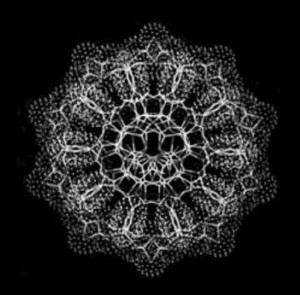
And he continues, through the prism of the metaphorical smashed glass, to examine the various angles of his mother’s reaction; her feelings toward him and his father; the past she’d betrayed; the multitude of possible reasons for her actions. Roth doesn’t allow the narrative to indulge in a moment of drama, which the moment, when it happened, clearly was. Rather, he withdraws from the action to examine all the factors at play. Within the memoir itself, a moment of revelation becomes its converse: an opportunity for further questioning.
Years before this moment, while he’s still at Yale, Roth concludes his literary investigations with Turgenev’s Fathers and Sons. He draws a parallel between the narrative strategy of Fathers and Sons and his own memoir, arguing that Turgenev’s “resistance to melodrama allows another kind of action to become central to the novel: how members of families learn to see each other as independent beings with separate lives, not with the resigned sense of giving up influence — “Oh, he’s his own person” — but really as a form of active understanding and thinking about the independent lives of those closest to us.”
This excerpt most explicitly articulates the strategy of The Scientists. It’s in the “resistance to melodrama” that Roth’s real subject — an intellectual effort to recollect and understand a fraught, frustrating, elusive family history — shines.
* * *
I recently received an unsolicited review copy of a memoir in the mail. It will remain nameless, but suffice it to say that the publicity copy designates it as belonging to a hot new category of memoir termed (at least by a certain publicist) as “dogoir” (think Marley and Me, which the same publicist regretfully admits to having low-bid on). I almost hate to say it, but as books like this demonstrate, memoir is easily made schlock. We can read seemingly unending numbers of stories about divorce, birth, travel, trauma, death, a dog. Our memoir-driven culture taps into a basic, voyeuristic narcissism: we read about others because we want to know what they’ll tell us about ourselves. And if we write and read memoirs with the expectation that readers want to live the story along with the writer, we get the kind of certainty and dramatic plot that defines most memoirs being written today — because if a reader wanted the uncertainty, confusion, and plot-less questioning that she experiences when considering her own past, couldn’t she just skip books entirely? The Scientists demonstrates that the articulation of that confusion — an intellectual examination of the chaotic, murky, episodic nature of memory — can in fact give us something new: a portrait of memory as a process.
The Scientists argues that any kind of truths about a family, a person, a relationship, are to be found (if they’re to be found at all) in the recounting, in the examination and cross-examination of memory. It is a rigorous, methodical dissection of memory under the microscope of memoir. The result is something altogether unique in contemporary memoir culture: a memoir that exists within the gap between metaphor and reality; between narrative and episode; between the character on a page and the person in real life.
This post may contain affiliate links.








